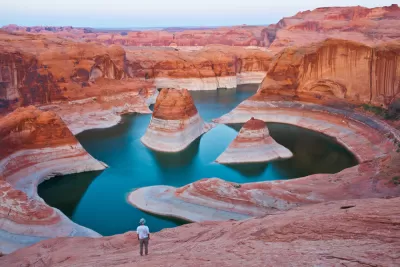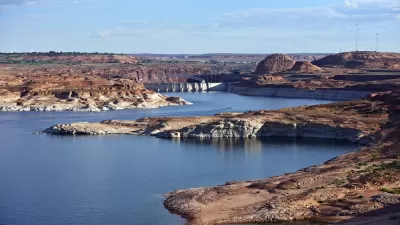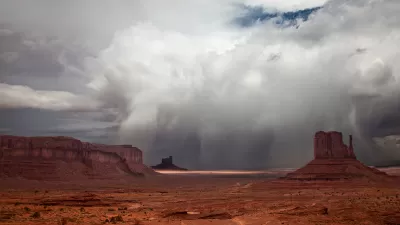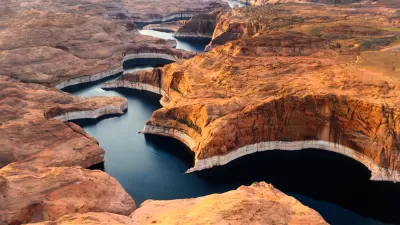In an interview with Lincoln Institute of Land Policy, former Arizona Governor and former Secretary of the Interior Bruce Babbit recommends new approaches to the challenges facing the Colorado River watershed.

Dr. Jim Holway, director of the Babbitt Center for Land and Water Policy, interviews former Arizona Governor and former Secretary of the Interior Bruce Babbit on the subject of the Colorado River.
Here are a few highlights from the interview:
- "The first challenge is to recognize that we live in a desert with huge and rapid climatic fluctuations. Across the twentieth century, we built the great system of reservoirs to store water against these fluctuations. But our assumptions regarding climate change and population growth were way off. We are now drawing more than a million acre-feet out of reservoir storage each year in excess of average inflow. And obviously that cannot continue. We must now work toward establishing balance across the entire basin. To get to that equilibrium will require adjustments from every water user: agricultural, municipal, power generation, and environmental uses. And it obviously can’t be done on a piecemeal, ad hoc basis; we’ll have to invent new processes of public involvement and shared adjustments from every town and city and farm in the basin."
- "In the West, connecting and integrating land and water use is a relatively new idea. Water use, like land use and zoning, has traditionally been a local affair, with little coordination or direction at the state or interstate level. But water is a common resource; developing on a local, project by project basis without thinking about regional supply and demand constraints inevitably leads to the crises and environmental degradation that we are now experiencing. The question is how to change that."
FULL STORY: Colorado River Reflections

Planetizen Federal Action Tracker
A weekly monitor of how Trump’s orders and actions are impacting planners and planning in America.

Maui's Vacation Rental Debate Turns Ugly
Verbal attacks, misinformation campaigns and fistfights plague a high-stakes debate to convert thousands of vacation rentals into long-term housing.

San Francisco Suspends Traffic Calming Amidst Record Deaths
Citing “a challenging fiscal landscape,” the city will cease the program on the heels of 42 traffic deaths, including 24 pedestrians.

Defunct Pittsburgh Power Plant to Become Residential Tower
A decommissioned steam heat plant will be redeveloped into almost 100 affordable housing units.

Trump Prompts Restructuring of Transportation Research Board in “Unprecedented Overreach”
The TRB has eliminated more than half of its committees including those focused on climate, equity, and cities.

Amtrak Rolls Out New Orleans to Alabama “Mardi Gras” Train
The new service will operate morning and evening departures between Mobile and New Orleans.
Urban Design for Planners 1: Software Tools
This six-course series explores essential urban design concepts using open source software and equips planners with the tools they need to participate fully in the urban design process.
Planning for Universal Design
Learn the tools for implementing Universal Design in planning regulations.
Heyer Gruel & Associates PA
JM Goldson LLC
Custer County Colorado
City of Camden Redevelopment Agency
City of Astoria
Transportation Research & Education Center (TREC) at Portland State University
Jefferson Parish Government
Camden Redevelopment Agency
City of Claremont





























